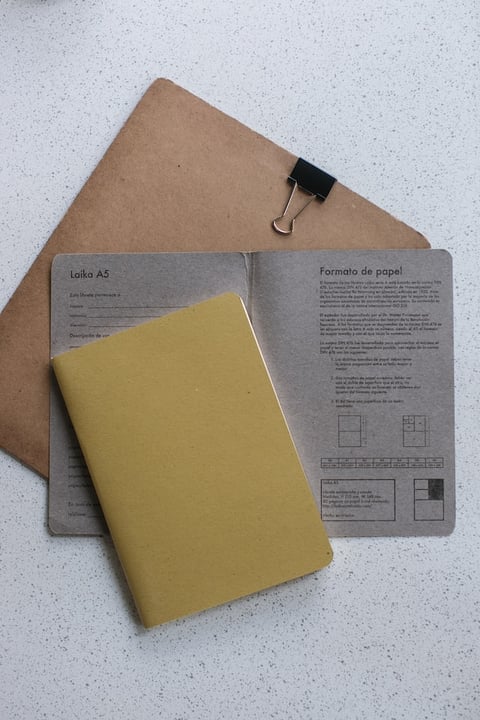Navigating the Maze: European Regulations (Part II)
Your Ultimate Guide to Success in the Industrial European Market
Previously, we covered the topic of CE certification as part of the European regulation which allows products to enter the European market. In this article, we will dive more specified into the Essential certifications for product that comes into contact with foods and beverages.
The Scope of the Topic
While the CE certification serves as the minimum requirement for products to enter the European market, Manufacturers of products that come particularly in contact with foods and beverages are required to comply with specific regulations that are enforced by the law. The regulations that will be discussed in these articles are the EU regulations no 1935/2004 and EC regulations 10/2011.
Explaining EU Regulation, no 1935/2004
This regulation is a specific standardized requirement in Europe for materials and articles that directly come into contact with food. The main purpose of this regulation is to ensure that materials and articles will not endanger human health, nor change the composition, odor, or taste of the food product*. It also requires manufacturers not to make misleading labels, advertisements and presentation of their products to consumers*.
Certain FCMs (food contact materials) such as plastics, ceramics, and regenerated cellulose are covered by independent harmonized regulations at an EU level to demonstrate conformity to the general safety requirements of the framework regulation. It is worth noting that the term FCM covers both direct or indirect contact and they do not cover fixed public or private water supply equipment.
To take a closer look at the EC1935/2004 regulation, The regulation establishes stringent criteria concerning materials used in contact with food, encompassing factors such as quality (ensured through good manufacturing practice EC2023/2006), traceability, migration tests, and documentation.

This regulation delineates a comprehensive legal framework applicable to 17 material groups, including adhesives, metals, ceramics, cork, glass, plastics, paper, rubber, and wood. Each of these materials, when in contact with food, possesses the potential to influence the food's properties. The phenomenon, known as the 'migration of substances,' entails the transfer of constituents from the material to the food. For instance, acidic foods may corrode metals, leading to the transfer of chemical elements into the food, presenting a potential risk upon consumption.
To mitigate the risk of contamination, EC1935/2004 stipulates strict tolerances and sets migration limits for the transfer of substances from material to food.
Maintaining full traceability of these materials is imperative for effective control, recall of defective products, providing consumers with accurate information, and assigning responsibility. Robust systems and procedures are necessary to identify businesses involved in the supply and receipt of materials. This information must be promptly accessible to competent authorities upon request. Additionally, materials and articles must be identifiable through an appropriate system, allowing traceability via labeling or relevant documentation.
Exploring the Process to Comply to the Regulations
For manufacturers to always be ready when a governmental body comes to control whether they are complying with the regulations, here are some steps a manufacturer can take:
- Understand the Requirements:
Companies need to thoroughly understand the requirements outlined in the EC1935/2004 regulation. This includes considerations for materials, quality, traceability, migration tests, and documentation.
- Implement Good Manufacturing Practices (GMP):
Adhering to Good Manufacturing Practices (GMP) specified in EC2023/2006 is crucial. GMP ensures that the manufacturing processes meet the necessary standards for producing materials intended for contact with food.
- Conduct Migration Tests:
Companies must conduct migration tests to assess the potential transfer of substances from materials to food. These tests are essential for ensuring that the transfer remains within permissible limits.
- Documentation and Record-Keeping:
Maintaining detailed documentation is a key aspect of compliance. This includes records of materials used, manufacturing processes, migration test results, and other relevant information.

- Traceability Systems:
Full traceability of materials is essential. Implementing robust systems and procedures to identify businesses involved in the supply chain, both suppliers and recipients is critical. This information should be readily available for competent authorities upon request.
- Certification Bodies:
Engage with certification bodies or competent authorities that can evaluate and certify compliance with EC1935/2004. These organizations can assess the company's adherence to the regulation and grant certification accordingly.
- Continuous Monitoring and Improvement:
Compliance is an ongoing process. Companies should establish mechanisms for continuous monitoring, assessment, and improvement to ensure that they consistently meet regulatory requirements.
Explaining EU Regulation, no 10/2011
On the other hand, EU regulation 10/2011 is one measure within the regulation EC1935/2004. This regulation acts as a tool that is utilized to prove that all plastic FCMs are safe to use.
The regulation EC1935/2004, covers plastic materials and articles that are intended to meet food, are already in contact with food, and are expected to meet food. This regulation is applicable for all materials that contain plastics - either exclusively or as a required limiting-layered structure. regulation requires limiting the amount of material that can be transferred to food from plastic packaging which refers to the word ‘migration of substances’ from the previous section. Another directive that it covers includes a positive list of monomers that can be used in Food Contact plastics and a partial positive list of additives that can be used in the area. Both have their migration limits.
Adhering to EU Regulation 10/2, it is an obligatory necessity for plastic materials used in food contact. The burden of ensuring compliance rests with the packaging manufacturer, and any alterations to the material must undergo re-analysis to affirm sustained adherence to the regulation.
Takeaways
In conclusion, navigating the complex landscape of European regulations, particularly EC1935/2004 and EU Regulation 10/2011, is essential for manufacturers involved in producing materials that come in contact with food. These regulations establish stringent criteria, encompassing material composition, quality, traceability, migration tests, and documentation, all aimed at ensuring the safety and integrity of food products.
The EC1935/2004 regulation provides a comprehensive legal framework applicable to various material groups, with a focus on preventing the migration of substances that could pose risks to human health. Strict tolerances and migration limits are set to mitigate the potential risk of contamination. Maintaining full traceability through robust systems and procedures is a fundamental aspect, enabling effective control, product recall, and accountability.
For manufacturers to comply with these regulations, understanding the requirements, implementing Good Manufacturing Practices (GMP), conducting migration tests, and maintaining thorough documentation are imperative steps. Full traceability of materials and engagement with certification bodies are critical, emphasizing the ongoing nature of compliance as an essential aspect of business operations.
Ready to expand into Europe?
Learn more.
-
https://eur-lex.europa.eu/LexUriServ/LexUriServ.do?uri=OJ:L:2004:338:0004:0017:en:PDF
-
https://eriks.com/en/know-how-hub/blogs/EC1935-2004-food-contact-materials-law
Category
Related articles
-

What Are the Top European Industrial Tradeshows in 2026-2027?
Last updated: 22 December 2025Discover the top European industrial tradeshows in 2026-2027 if your business is planning business...
Read more -

Robotics to Vision: EuroDev Drives Automation Growth in Europe
Last updated: 22 August 2025Discover key trends and real case studies of North American oil & gas companies innovating and...
Read more -

Key Trends for North American Oil & Gas Companies Entering Europe
Last updated: 30 July 2025Discover key trends and real case studies of North American oil & gas companies innovating and...
Read more

